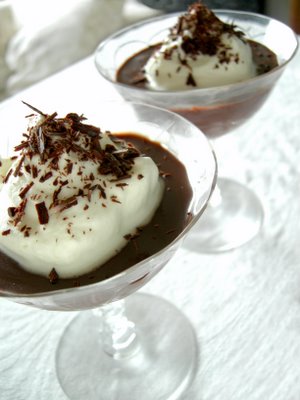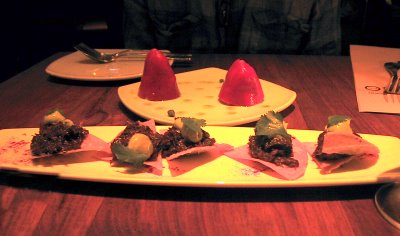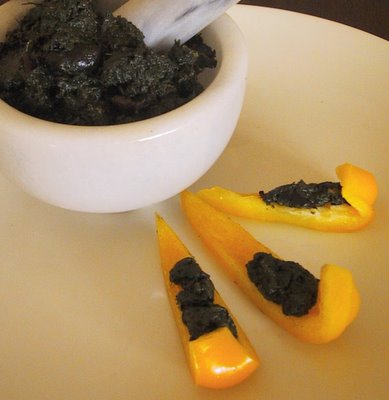Chocolate and Valpolicella Crema

Happy Mardi Gras! Hey - just because we aren't shimmying down the streets of Rio boa'd and beaded and feathered and masked doesn't mean we can't celebrate, right?
Normally, I am not into celebrating impending deprivation (Lent) or worse, mortality. Mardi Gras, French for Fat Tuesday, is followed by Ash Wednesday's dust to dust, ashes to ashes, in which sinners spend the day sporting an ashen reminder of mortality on their foreheads. Such contemplation no doubt intensifies repenting. Picture fire and brimstone, etc.
According to Herodotus, considered the first Greek historian, the Egyptians had a similar tradition. "At rich men's banquets, after dinner a man carries around a wooden image of a corpse in a coffin.... This he shows to each man saying 'Drink and make merry, but look on this; for such shalt thou be when thou art dead.' Such is the custom at their drinking bouts."
Now I'm not recommending you try this at your next dinner party, but somewhere in the back of your mind, isn't this one reason why every meal counts? Can you come up with a more elaborate justification for this sinfully rich dessert?
One of my favorite desserts when I was a kid, was chocolate pudding. I loved the thick skin that covered the milky pudding. Ah, the privilege of adulthood. Now I can whip up a dessert that has this intensity all the way through, not just on the top.
This chocolate crema elevates the pudding by adding a little wine and a lot of richness. This is not a mousse, whose joy consists of lightness. No, in contrast, this is a thick and velvet smoothness that effortlessly melts in your mouth. An intense chocolate experience. The recipe suggests that this serves 4 - 6. It is so rich, I suggest that it serves at least 8, preferably 1o. For this toast to the sweet life, you only need a spoonful or two to savor.
So put this on the turntable, and Carpe Diem and Carne Vale!
Chocolate and Valpolicella Crema from the Babbo cookbook
1/2 cup red wine, preferably Valpolicella or another medium body fruity red wine
1/4 cup plus 2 Tblsp plus 1 Tblsp sugar
6 ounces bittersweet chocolate, finely chopped
4 ounces unsweetened chocolate, finely chopped
4 egg yolks
1/2 cup plus 2 Tablespoons milk
1 cup heavy cream
1/2 Tablespoon unsalted butter
- Combine the red wine and 1/4 cup of sugar in a small sauce pan and bring to boil. Reduce heat and simmer until reduced to a third, about 15 minutes. Set aside.
- Heat both chocolates in a a large bowl ( I use a big pyrex bowl) over the bottom half of a double boiler until melted. Turn off the heat. Leave the bowl sitting over the hot pan and whisk in the reduced red wine. Then whisk in the egg yolks.
- In a medium saucepan, scald the milk and 1/2 cup heavy cream and 2 Tablespoons of sugar. Whisk quickly into the chocolate mixture. Whisk in the butter.
- Portion into wine glasses or desert cups and chill until set.
- Prior to serving, whip the half cup of cream into soft peaks, add 1 tablespoon of sugar and whip until stiff peaks develop.
- Serve each crema with a topping of cream. Enjoy!
Tagged with: Food + Dessert
Herodotus translation from Choice Cuts












